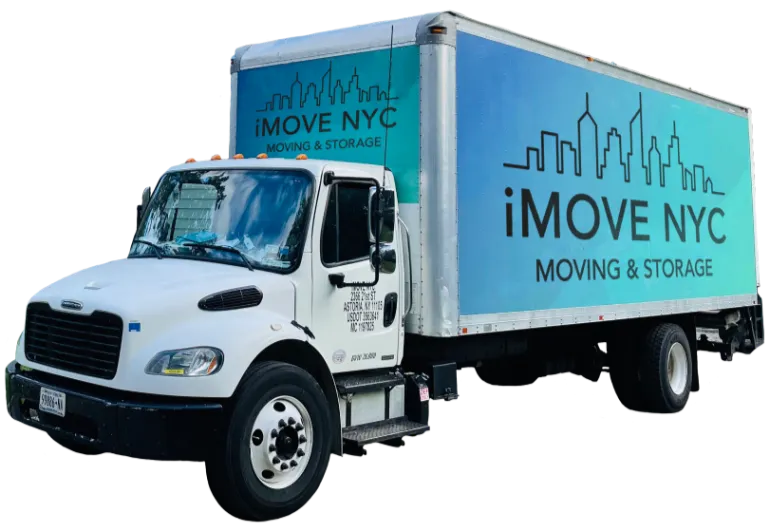Being able to understand the basic moving terminology is a key to good communication when working with professional movers.
Moving companies, real estate brokerages, and agents all use this terminology when answering clients’ questions and explaining the moving process. That is why I decide to write down the list of essential moving terminology that you will encounter on daily basis during the moving process.
The ABC Of The Moving Process
Let’s cut to the chase and keep things well organized and sorted alphabetically, so in case you need to quickly re-check some phrase or word you can easily find it.
A
Accessorial charges – Moving companies use this phrase for all additional services they will charge you such as – packing, unpacking, crating, or appliance disconnection. These fees are always added to the actual moving cost.
Actual charges – This is the final cost of your move, from the beginning to the end. It includes moving costs, warehouse fees, and accessorial charges.
AMSA – This is the abbreviation for American Moving & Storage Association. This organization of moving companies is dedicated to improving the moving and storage, advocating on behalf of moving companies, and promoting ProMovers.
Appliance service – When a moving company or a third party prepares electrical appliances for transportation you will be charged with appliance service.
Arrival window – This is the time frame that tells you when your movers will arrive at your pick-up location to begin the process of loading your belongings from your old apartment to the moving truck. Your movers will call or text you while on their way to your house, and when they are close to your location, so you can meet them in case you are currently away.
B
Bill of Lading – This marks a legally binding document between the customer and the mover that guarantees the shipment is picked up, loaded, transported, and received at the unloading location. You’ll need to sign this document on the day of a move after the workers load your belongings on the moving truck. Keep in mind that by law, every moving company is obliged to provide you with the Bill of Lading and it must contain the same information shown on the Order for Service.
Bulky article charge – In case you need to transport large items such as cars, jacuzzi, snowmobiles, pool tables, or any other items that are hard to load and require extra handling are subject to an additional charge. You will pay this fee to compensate the carriers for an unusual bulky weight that they need to move.
C
Cancellation conditions – This is a policy that explains the conditions and timing in which you as a customer can cancel the booking without incurring a predicted cost. Every moving company is obliged to notify you about the guidelines on how much in advance you need to fail for cancellation and in what time frame you can expect the return of a paid deposit or paid invoice.
Cargo claim – A claim filed by a customer in case some of the goods are lost, broken, or damaged during a move or in the storage.
Cash on delivery (C.O.D.) – When a customer makes a payment upon delivery at the location.
COI (Certificate of Insurance) – This is a phrase you really want to get familiar with. The COI confirms that your chosen moving company acquired an insurance policy that covers liability and loss in the same amount as the insurance limits required by your building. Meaning in case anything gets damaged the cost of repair is fully covered. In New York City these certificates are mandatory.
Coverage options – Every moving company is required to offer two types of coverage to their customers on out-of-state moves. The first one is Released Value Protection, and the other one is Minimum Carrier Liability. The price is set at 60 cents per pound.
Cube sheet – This is a list of household items and the amount of space, in cubic feet, they require in a moving truck. They usually convert this amount into weight and use it to determine the moving estimate.
D
Delivery window – The time frame in which a moving company is scheduled to deliver your belongings to your moving location. It depends mainly on the distance of the move, so in the case of a long-distance relocation, it can take days and weeks.
Diversion – This is any unpredicted route change while the moving truck is already on the route. This can be a change of the shipment’s destination or any additional stop.
E
Elevator charge – When your moving process includes moving items in an elevator you will need to pay an elevator fee.
Estimate, Binding agreement – This is when a customer and a moving company make a deal that guarantees the total cost of the move will be based on the weight of household belongings plus already estimated accessorial services.
Estimate, Non-Binding agreement – This is a moving process where the final cost is based on the estimated weight of household belongings and any additional accessorial services that might occur during the moving process.
F
Flat fee – This is an upfront price based on the detailed information estimators collected from the customer. It is based on the list of inventory items, pick-up and drop-off locations, and any special moving requirements.
Flight charge – An additional fee you will pay in cases when movers need to carry items up or down one or multiple flights of stairs.
Federal Motor Carrier Safety Administration – FMCSA is an agency in the Department of Transportation that regulates the necessary requirements for moving companies, trucks, and equipment.
Full-Value protection insurance – A policy that covers the current market value of any of your items, the reair or the replacement in case any damage occurs during the move.
H
High-value inventory form – This phrase is used for labeling any articles and items that have high or extraordinary value. Anything that needs to be transported and has a value over $100 per pound is classified as a high-value item. These items must be listed on a High-value inventory form that your moving company provides, in case you don’t have any high-value items just write “none”.
I
Impracticable operations – When conditions prohibit a moving company from carrying out your belongings with their standard equipment and they need to use special equipment or additional labor.
Inherent vice – When the condition of a very valuable item prevents a moving company from moving it without causing it damage, for example, antiques that are already fragile due to the weather conditions or simply time.
L
Line-haul charges – These charges are calculated based on the mileage and weight of a shipment. Especially for long-distance moves.
Long carry charge – In case your moving company truck can’t park near your new apartment the mover need to carry items for an excessive distance from home to the ruck and vice versa.
N
Non-allowable list – A list of items that moving companies will refuse to handle because they may contaminate or damage the property of the moving company or customers’ property. These can be plants and items that are infested with bugs, large furniture that will not fit through doorways, propane tanks, and any other prohibited chemicals.
O
Order for Service – This is a legal document that authorizes a moving company to move your belongings.
Overflow – In case you have too many items and there is no more space in the moving truck they will be left begins until the additional truck arrives to pick up the leftovers.
P
Peak season rates – Keep in mind that moves that occur during the busiest season for moving companies, between May 15 and September 30 will be charged more.
Preferred arrival date – The date you as a customer requested for delivery since it is a more suitable one.
ProMover (AMSA) – This is how AMSA labels a moving company that is certified, trustworthy, reputable, and professional.
R
Reweigh – You as a customer can request a reweigh upon delivery if you think that the first estimation isn’t valid. In this case, charges will be calculated based on the new net weight.
S
Shuttle service – When a moving truck can’t access your property the moving company will use a smaller vehicle to transport items.
Storage-In-Transit (SIT) – If your new home isn’t ready yet, you can request temporary storage in a warehouse. SIT service can’t exceed a total of 90 days and you will be charged some additional fees.
T
Tare weight – This labels the weight of the moving truck, the following equipment, and packing materials before your belongings are loaded. This weight helps determine the final net weight of your belongings for which you will be charged.
Tariff – This is a detailed list of all the rates, rules, and regulations provided by the company. Depending on the type of move you requested the tariffs will be different.
Transit time – The time that the company will need to deliver your belongings from the moment they are picked up until they are delivered to your designated destination.
U
Updater Certified Moving Company – This is a set of strict criteria regarding reliability and customer service. Only the best moving companies in the industry have this certificate.
USDOT Number – This number serves as registration for any transporting vehicle that carries the cargo across state lines. You can check a moving company’s USDOT number to see if the moving company is properly registered.
Y
Your Rights and Responsibilities When You Move – This is a document issued by the government that will help anyone who is moving to understand every step of the moving process. All the necessary information about moving paperwork, estimates, claims, and insurance are in this document.
Take A Chance With iMOVE NYC
Now that you are familiar with the most important moving terminology, you are better equipped to negotiate your next relocation. It’s vital to know all the terms regarding your bill of lading and valuation coverage to be able to protect your assets during the move the best you can.
In case this guide wasn’t clear enough for you and you need some additional information and clarification why not send us an email, or give us a quick call? We at iMOVE NYC are open to all your questions and considerations.




